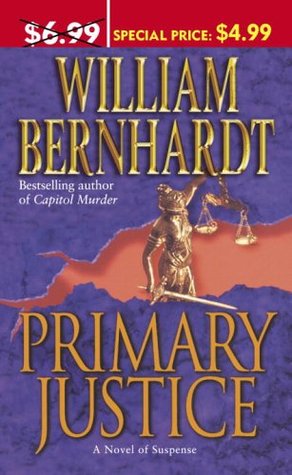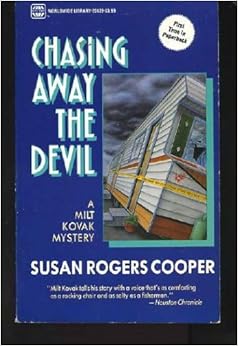I wonder if you are like I used to be: I had seen Psycho, as well as many other films by Alfred Hitchcock, while sitting in my living room.
And I liked these films a lot.
The fact that the film was showing on a screen less than three feet across didn't seem to cause any problems.
And, when I watched Psycho on DVD, I didn't even have to worry that anything had been cut out by television executives who might be worried over advertisement space or public decency concerns.
The entire film was there for me to see, just the way Alfred Hitchcock had intended me to see it, and I could enjoy it in its entirety. True, Psycho seemed to sag a bit in the middle, but a quick trip to the kitchen for more beer and popcorn fixed that problem too.
Boy, Was I WRONG!
In September of 2015, Turner Classic Movie channel teamed with Fandango to present Alfred Hitchcock's Psycho in several movie theaters across the country. I thought it might be fun to take my kids to watch it, and my two sons were both available (my daughter, Raven, had to work) so I bought the tickets online.
On the appointed date, my sons and I trooped down to the Cinemark theater, which shares a parking lot with a gigantic Bass Fishing Store, near our home. And that Bass Fishing Store may not have made any impact on the film, but that theater sure did.
Not the fact that we went to the Cinemark -- though it is a very nice theater (with recliner seating, even!) -- it was instead what I have finally decided to call 'the theatricality of the film'.
 |
| Glad to say no late arrivals were permitted at my screening either. |
In fact, I now have to admit: I had never really seen Psycho before. Oh, sure: I saw it on the small screen in my living room probably dozens of times. But, seeing Psycho on the big screen?
That's when I actually saw Psycho -- the TRUE Psycho, as it was meant to be -- for the first time.
The difference between watching it on the small screen, and seeing it unfold on the big screen astounded me. That difference was not just surprising. It was pretty shocking. And, in one instance, literally moving! (And I do mean literally not figuratively.)
In fact, the effect was so great it had me puzzling about it, and discussing it with my two sons afterward.
I've read quite a bit about Alfred Hitchcock, of course. Who can write mysteries, hoping to sell them to AHMM, without reading a bit about the guy? I knew about many of his remarkable cinematic slights of hand, in which he supposedly made audience members feel as if they were watching the film from within -- sitting inside the action as it transpired. I had noticed faint hints of this on the small screen, too. So I thought I understood what the writers of those articles were talking about and describing.
But, I was wrong again.
On a DVD of Dial M for Murder, which I got from my local library, I watched a segment, after the film, in which another director (I think it was Martin Scorsese, but I'm not sure.) discussed the film.
He explained that Dial M for Murder had originally been released in 3D, but primarily showed in 2D because 3D was already on the way out when the film was released. This director, however, had seen the 3D version and been amazed by the manner in which Hitchcock employed the technique, using it to provide added depth to on-screen setting, in order to draw the audience more directly up onto the stage itself. He added that, in retrospect, he knew he should not have been surprised, given that Hitchcock's filming technique often lent an almost-3D effect to his 2D films.
Watching the film, in the theater, when different people pulled in at the motor court run by Norman Bates (played by Anthony Perkins) I suddenly understood what that man had mean, with all that talk about a 3D effect in 2D films.
 |
| Aerial shot of the motor court and house on the studio lot. Courtesy Time Life |
On the large screen, however, that motor court had a definite 3D feel to it. I felt as if I could have walked past the car that had just stopped in front of me, and strolled up onto the wooden sidewalk in front of the rooms, and that my feet would have kicked through about twenty or thirty feet of dirt parking lot before I reached that walkway.
After the film, I asked my two sons, and both agreed that they had found the motor court surprisingly 3D in feel. We also agreed that the details within the shots had been nearly overwhelming at times. We had often felt -- each, singly -- as if we were sitting in the same room that the characters occupied. Sometimes even near the center of the room. Dressers, counters, sinks, even stuffed birds looked ... well, I guess I can only call it TANGIBLE. It felt as if they were really there, right in front of us, and we could reach out and actually touch them if we wanted.
None of us could think of a single instance when we had experienced such a feeling while watching a contemporary film. Which tells you how much we lost with Hitchcock's passing.
I had watched all this for quite some time, thinking:
Hmmm. I always thought the film dragged a bit after the murder scene, but I don't feel as if it's dragging at all this time. I wonder why.
-- when something occurred that startled me into realizing part of the answer.
All my life I had heard stories about Hitchcock shooting scenes in a manner that manipulated audience members -- like making everyone in the theater lean to one side in an attempt to see through a crack between a door and the doorjamb, for instance. But, I had never experienced this for myself.
Now I have!
On the big screen, when Detective Milton Arbogast (played by Martin Balsom) enters the hardware store where Lila Crane (played by Vera Miles) has gone to find her missing sister's boyfriend, a remarkable thing takes place. And, humorously, when I'd seen the film on television, I'd assumed this odd thing was simply the result of an error by whoever had edited it for the small screen. After all, they cut off part of the top and bottom of the character's head!
Watching in the theater, as "Arbogast" entered the room, his "cut off" head completely FILLED the screen. It invaded my space! And I suddenly moved my head, to give the man room to get into the place. I was afraid he was going to bump into me and we'd both be embarrassed by the collision!
 |
| Arbogast. He doesn't look so forceful in this shot. |
headedness, his willingness to push through any obstacle, not caring about the cost, was instantly communicated to me. Just through this one, one-second or less, scene.
I was shocked!
After all, I'm a writer. I work hard to make words count, to make them carry as much load as they can in my stories.
And, here was a director using cinematography to make every second, or half-second, of his film carry as much load as it could.
Sure, there have been scenes in movies that I've seen, in which something is rapidly communicated on-screen with little or no dialogue. But this communication usually comes as a sort of punch-line, the answer to a question or mystery that's been plaguing the viewer throughout the film. This scene can carry so much load, because the burden of much of the information it conveys was shouldered earlier, by those scenes that created the question in our minds; the question this scene answered.
But that is NOT what happened here.
In response to the realization: Did I just duck out of that guy's way? I DID! And he's a two-dimensional fictional character on a screen at least seventy feet away from me. How did he manage to invade my space like that? I began thinking about the film, about what I was seeing.
I came to view the film not only for its inherent entertainment value, but also to look at what was happening in the technique, and what that technique did to me. I finally realized that the reason I didn't think the film was dragging, was because Hitchcock was forcing every second to carry its own weight -- something that didn't happen when I saw it on the small screen at home. At home, for instance, Arbogast's entrance had looked like an editing error. In the theater, this same shot forced me to move my head, to get out of a two-dimensional character's way.
I have to tell you: If you get the chance to watch a Hitchcock film in a theater -- JUMP AT IT! If your experience with that film is anything like mine at Psycho, you'll be glad you did.
See you in two weeks!
--Dixon








































